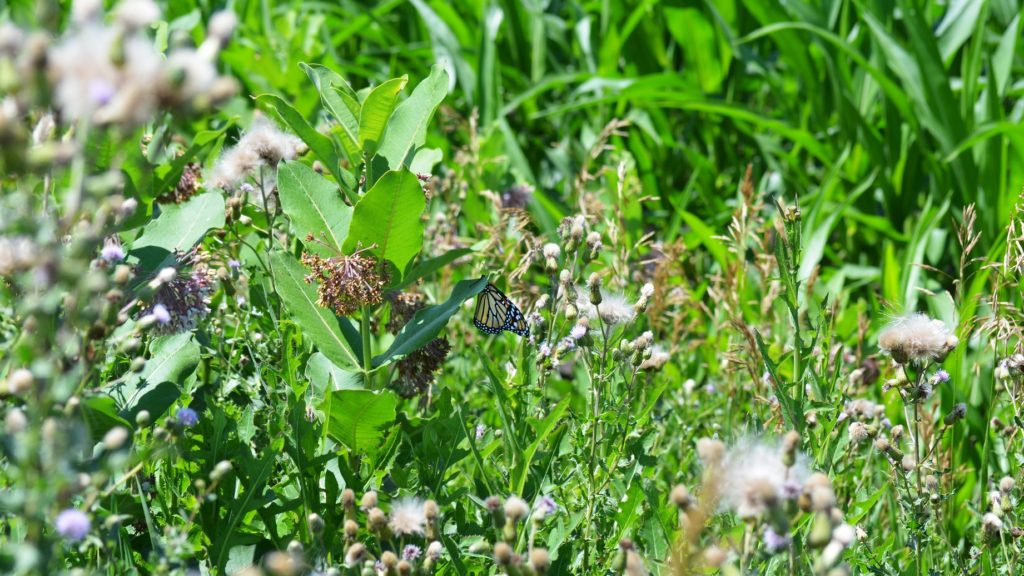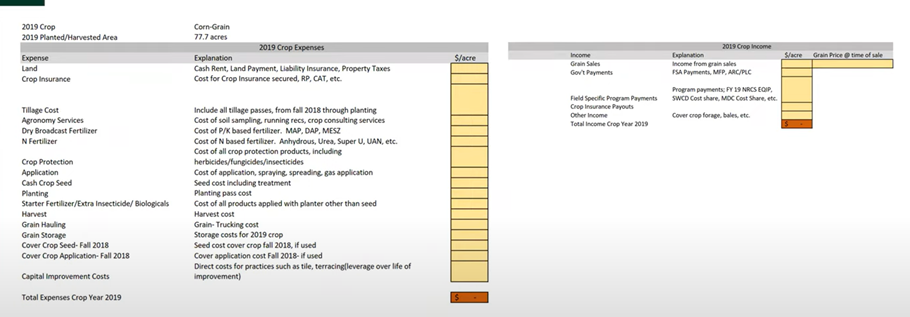Where are the monarchs now?
The first monarchs arrived at their overwintering sites in Mexico on the first of November – just in time for the Day of the Dead the following day. The last of the monarchs in each migration usually reach the colonies by the first week of December. Once the butterflies are well settled, usually by mid-December, measurements of the areas of the forest occupied by clusters of monarchs begins. Learn more and view the sightings map at Journey North.

A farmer’s work is never done. Even in the post-harvest period of the year, you are always looking ahead to next year’s crop—whether that means field maintenance, spraying, equipment clean-up or analyzing your field maps and yield data. There are steps you can take each year to determine what areas of your land are economically beneficial and what options to consider for maximizing agriculture operations. Farmers for Monarchs spoke with Adam Jones, conservation specialist for the Missouri Farmers Association, on how farmers can use their precision field data to identify potential areas for enrolling in federal conservation programs and planted with monarch and pollinator habitat.
Planting pollinator habitat on your farm can be done in a variety of ways. It can occur on field margins, such as in hedgerows, or buffer strips. It can also occur within fields such as flower-rich cover crops and prairie strips. Managing in-field or adjacent lands for pollinator and monarch habitat can have a variety of land and landowner benefits. Permanent vegetation cover helps reduce soil erosion and absorbs excess nitrogen that could otherwise be leached below the root zone. Soil health can be improved when planting pollinator mixes and often leads to reduced surface water runoff which in turn leads to increased local water quality. There are also benefits related to annual weed suppression, increases in beneficial insects, biodiversity, and it looks great!
Analyze the Data
Jones began by showing yield data from his soybean field. The map showed areas of high and low production over several years. It is important to include several years of data in any analysis to understand the historical trend of the yield.
When analyzing the historically underperforming areas, Jones stressed the importance of understanding why the yield is low and whether those issues can be addressed.
“Moving acres to and from production are fairly important decisions overall, and we certainly want to make sure we’re making the right ones,” Jones said. “Don't make any rash decisions over one year. Most of these major things are going to tell their story over years and years.”
Where areas have historically underperformed that cannot be addressed, it may make economic sense to enroll the acreage into a government program such as the Conservation Reserve Program or Conservation Stewardship Program.
“Essentially, we're trying to get to a break-even yield per acre,” Jones said.
All managed lands require maintenance, even if acreage is taken out of production and used for monarch and pollinator habitat. Establishing and maintaining wildlife habitat requires site prep, seeding and maintenance. All factors should be included in any full-farm analysis of field production, cost and efficiency. Jones shared the following cost benefit spreadsheet listing all the data he collects in evaluating land production.

Jones also discussed the importance of communication. Robust agriculture operations involve more than one party and managing those relationships with effective and open communication is critical for precision agriculture. Ensure you are communicating with all stakeholders so you are all on the same page to avoid any pitfalls that may inhibit economic efficiency. Even communicating a change in boundaries can be helpful especially for a critical task like spraying.
Help Is Always Available
Whether analyzing unproductive acres or considering a federal program like Conservation Reserve Program, Conservation Stewardship Program or the Environmental Quality Incentives Program, Farmers for Monarchs encourages you to call the Pollinator Habitat Help Desk at (337) 422-4828 or (337) HABITAT. You can also reach out to an organization like Pheasants Forever or your local USDA service center who have experts available who can assist you in ensuring your farm is economically efficient as well as supportive of monarchs and other pollinators.
